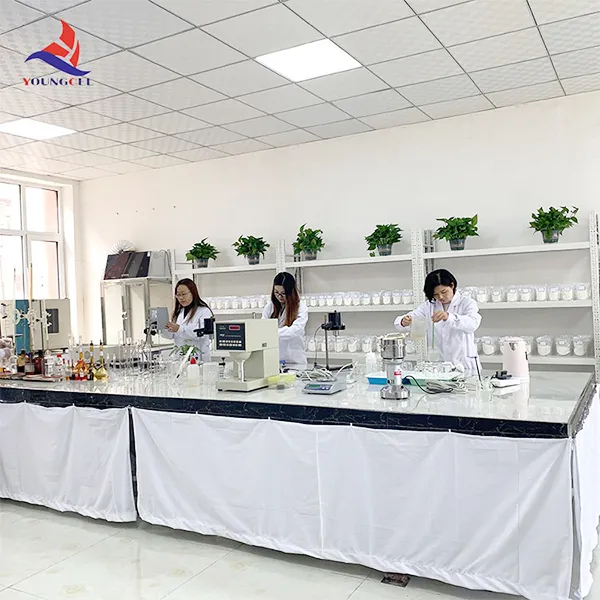The Versatility of Hydroxypropyl Methyl Cellulose (HPMC)
Hydroxypropyl Methyl Cellulose (HPMC) is a versatile, non-ionic cellulose ether widely used across various industries, particularly in food, pharmaceuticals, construction, and cosmetics. This polymer, derived from natural cellulose, offers an array of functionalities that make it a valuable additive in numerous formulations.
One of the most significant properties of HPMC is its ability to act as a thickening agent. In the food industry, it is commonly used to enhance the texture and mouthfeel of food products. For instance, it is often found in sauces, dressings, and baked goods, where it helps to create a desirable viscosity while improving stability. Moreover, HPMC can also serve as a fat replacer in low-fat formulations, allowing manufacturers to create healthier options without sacrificing taste or structure.
The Versatility of Hydroxypropyl Methyl Cellulose (HPMC)
The construction industry has also embraced HPMC for its multifunctional benefits. It is commonly used in the production of tile adhesives, joint compounds, and other building materials. In this context, HPMC acts as a water-retention agent, which enhances the workability of cement-based products. This property is critical for ensuring that the adhesive maintains its integrity during application and provides a strong bond once set. Furthermore, HPMC’s ability to improve application time and ease of use makes it a favored choice among builders and construction professionals.
hydroxypropyl methyl cellulose (hpmc)

In cosmetics and personal care products, HPMC serves various roles, including as a thickener, stabilizer, and emulsifier. It helps to improve the texture of creams and lotions while ensuring that ingredients do not separate over time. Additionally, HPMC is often used in skin care products to provide a protective film on the skin, enhancing moisture retention without a greasy residue. Its hypoallergenic properties further make HPMC a safe option for sensitive skin formulations.
The production of HPMC is environmentally friendly, as it is derived from renewable cellulose sources. This aspect aligns with the growing demand for sustainable and bio-based materials across various industries. Manufacturers increasingly seek to incorporate HPMC into their products not only for its functional benefits but also for its reduced environmental impact compared to synthetic alternatives.
Despite its numerous applications, it is essential to consider the appropriate formulation and concentration of HPMC to achieve desired results. Depending on the specific needs of each application, variations in the degree of substitution (the ratio of hydroxypropyl to methyl groups) can significantly influence the properties of HPMC. Therefore, thorough testing and formulation development are crucial to maximizing the benefits of this versatile polymer.
In conclusion, Hydroxypropyl Methyl Cellulose (HPMC) is a remarkable compound with extensive applications across multiple industries. Its multifunctional properties, sustainability, and efficacy make it an indispensable ingredient in modern formulations, from food and medicine to construction and cosmetics. As industries continue to evolve, the importance of HPMC is only expected to grow, paving the way for innovative uses and formulations in the future.
-
The Application and Significance of Construction RdpNewsMay.19,2025
-
Industrial Grade HpmcNewsMay.19,2025
-
Building Coating Adhesive Building Coating Adhesive HpmcNewsMay.19,2025
-
Application Of Hpmc For Detergent For Detergent In DetergentsNewsMay.19,2025
-
Application Of Hpmc Cellulose In Cement-Based MaterialsNewsMay.19,2025
-
Application Of High Quality Hpmc For Construction In The Field Of ConstructionNewsMay.19,2025




